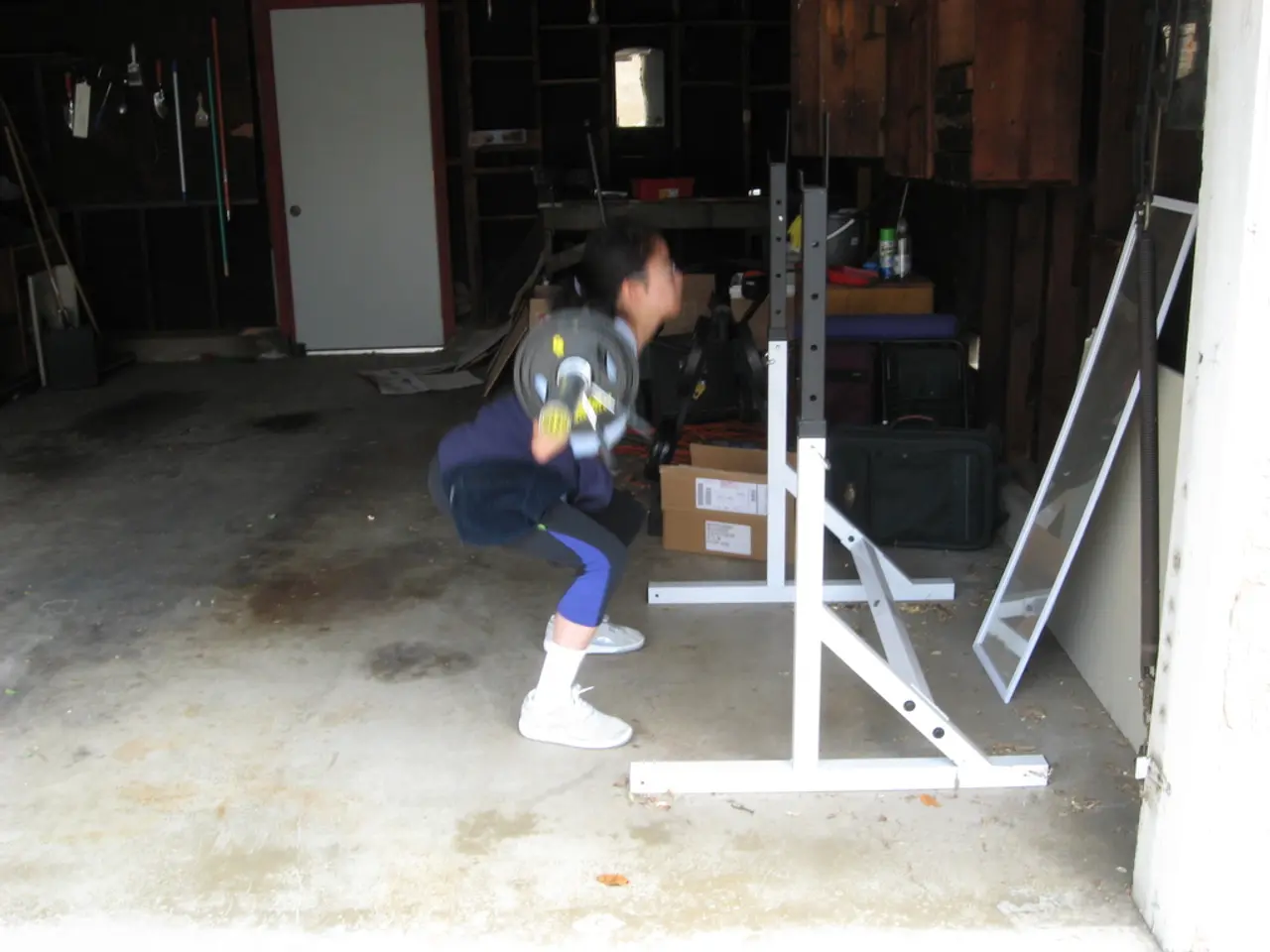Exercises performed while standing that can reverse muscle loss at a quicker rate than traditional gym workouts for individuals over the age of 40.
Standing exercises are gaining popularity as a powerful tool for maintaining and improving physical fitness, particularly in the fight against muscle loss as we age. These exercises offer numerous advantages over traditional gym workouts, making them an ideal choice for those looking to stay active and healthy.
One of the key benefits of standing exercises is their ability to engage the stabilizer muscles and the nervous system. Exercises such as the overhead press with dumbbells and standing lunges are excellent for building upper body strength and leg strength, respectively. These movements mimic the way we move in real life, challenging balance, core stability, and coordination while building strength.
The overhead press, for example, requires standing tall and holding dumbbells at shoulder level before pressing the weights overhead and lowering them with control. This exercise is not only beneficial for the shoulders and arms but also helps to improve posture and overall upper body strength.
Standing calf raises, on the other hand, are beneficial for the calves, ankles, and balance. By rising onto the balls of the feet, holding for a moment at the top, and lowering, this exercise helps to strengthen the lower body and improve balance.
Loaded carry, which involves holding a heavy dumbbell and walking forward with a solid posture for 30 to 45 seconds, completing 3 to 4 rounds, is another effective standing exercise. This exercise builds grip, core, and full-body strength, making it a great addition to any workout routine.
Standing resistance band row is another exercise that should not be overlooked. This exercise is beneficial for the back and arms, and involves anchoring a band at chest level, pulling it towards the body, squeezing shoulder blades, and extending arms back to the start position. It is recommended to perform 3 sets of 12 reps for this exercise.
In addition to building strength, standing exercises have been shown to be more productive than traditional gym workouts in reversing muscle loss after 40. This is because standing exercises (also known as functional training) recruit more muscle fibers through multi-joint movements that mimic daily activities, improving neuromuscular coordination, balance, and proprioception. They also stimulate both slow and fast muscle fibres, key to strength and reactivity, thereby effectively countering sarcopenia and reducing fall risk.
In conclusion, standing exercises are an excellent choice for those looking to improve their physical fitness and reverse muscle loss as they age. By engaging more muscles at once and mimicking real-life movements, standing exercises offer numerous benefits over traditional gym workouts. So, why not give them a try and see the difference they can make in your fitness journey?




